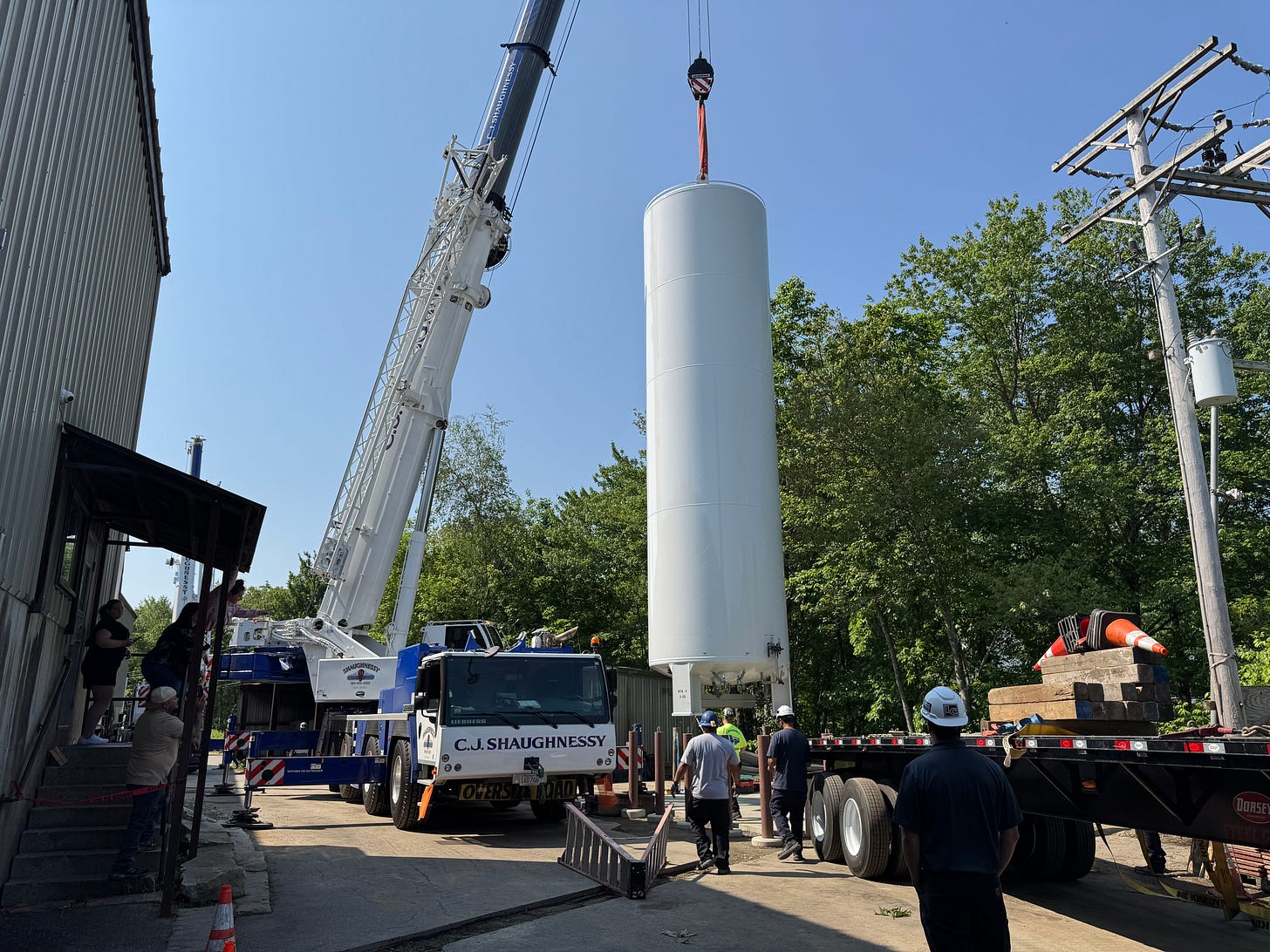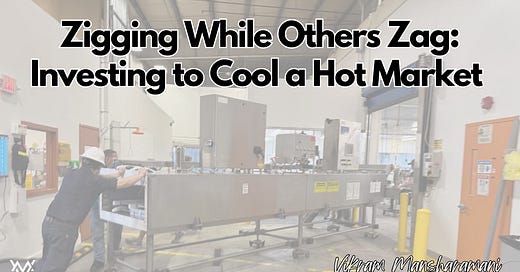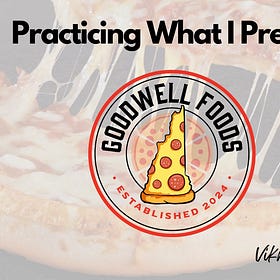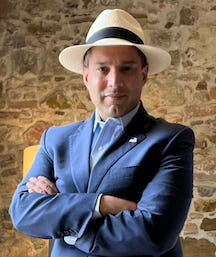Zigging While Others Zag: Investing to Cool a Hot Market
Why I'm investing despite today's economic, geopolitical, and technological uncertainty.
For many business leaders, the cross currents of a global trade war, military conflict in the Middle East, shifting geopolitical pressures, and disruption from new technologies have created a paralyzing level of uncertainty. Does it make sense to invest when artificial intelligence may replace your entire industry? What if tariffs create chaos in your supply chain? For many, the obvious course of action is, well, no action at all.
As a generalist with a contrarian bent, I’ve decided instead to look at the big picture, connect the dots across different trends, and come up with a probabilistic assessment of how the future may unfold for the pizza industry. It’s led me to a different course: I’m proactively investing amidst today’s uncertainty as I see a bright future ahead.
Practicing What I Preach
For years, I’ve suggested that the best way to navigate uncertainty is to integrate thinking by crossing silos and connecting dots. I’ve often described this method as the “generalist approach” becau…
As I’ve written before, demand for frozen pizza (and specifically private label frozen pizza) tends to grow during times of economic uncertainty as consumers opt to forgo dining out and focus on lower-priced, cook-at-home options. Further, the increasing use of obesity-targeting treatments such as Ozempic are leading to a shift in consumer preferences towards individual portion sizes. And lastly, the rapidly growing pressure to remove chemical preservatives and artificial ingredients from our food means consumers are interested in foods made with natural ingredients. These trends pointed to an opportunity for Goodwell Foods to grow by investing despite today’s economic, geopolitical, and technological uncertainty.
Growing a plant’s potential output in a constrained space is not an easy task and generally involves an evaluation of bottlenecks that are holding production down. And when I evaluated the limiting factors that were impeding productivity, one element of our production process stood out like a sore thumb—heat. Why’s that? Because when a pizza crust comes out of our oven, it’s hot. Really hot. That’s not a problem at a restaurant or pizza shop, but it is for a frozen pizza manufacturer. And the burden that heat put on our freezer required us to slow our production speed to match the freezer’s ability to freeze. And if our pizzas are not frozen entirely, we can’t package, box or ship them out to customers.
While New Hampshire winters are sufficiently cold to make our freezer unnecessary on many days, the summers are a different story. Our plant’s capacity drops in the summer as we must slow our line speed to ensure the freezer can keep up with the flow of pizzas.

This means that our ability to produce frozen pizzas is directly tied to our ability to freeze them. The solution: break the bottleneck by reducing heat to unlock greater potential output. That’s exactly what our new equipment will do. We are installing a nitrogen tunnel made by Linde, the world’s leading industrial gas company, that will efficiently cool our crusts as they exit the oven. By rapidly removing heat from our products and allowing them to freeze more quickly, the liquid nitrogen we spray on the pizzas will make our pizzas taste better, have longer shelf life, and maintain a “fresh baked” texture when cooked.
This means that our ability to produce frozen pizzas is directly tied to our ability to freeze them. The solution: break the bottleneck by reducing heat to unlock greater potential output.
While it’s impossible to know the future, my decision to invest was based on a probabilistic analysis of several scenarios using multiple lenses. My economic analysis suggested that frozen pizza should do well in both hot (inflation) and cold (recession) environments. And while the “Ozempic Factor” may ultimately prove fleeting, there were other trends (marriage rates, birth rates, etc.) supporting smaller or individual portion sizes. And while it’s possible consumers may be willing to knowingly consume chemical preservatives in their food, I’m willing to bet they aren’t.
Ready, Fire, Aim!
I recently started a frozen pizza manufacturer in New Hampshire. When I launched the company by purchasing the distressed assets of a company that had recently failed, the new business had to go fro…
Navigating uncertainty isn’t about finding an answer per se, it’s about making prudent bets. And while it’s certain that some bets will end up being losers, that doesn’t mean leaders should allow uncertainty to paralyze them. As I’ve recently written, sometimes it’s best to act and adjust, rather than analyze and be paralyzed. So, when trying to navigate the rampant cross currents of today’s uncertain world, try connecting dots, analyzing trends, and then making the best decision you can.
VIKRAM MANSHARAMANI is an entrepreneur, consultant, scholar, neighbor, husband, father, volunteer, and professional generalist who thinks in multiple-dimensions and looks beyond the short-term. Self-taught to think around corners and connect original dots, he spends his time speaking with global leaders in business, government, academia, and journalism. He’s currently the Chairman and CEO of Goodwell Foods, a manufacturer of private label frozen pizza. LinkedIn has twice listed him as its #1 Top Voice in Money & Finance, and Worth profiled him as one of the 100 Most Powerful People in Global Finance. Vikram earned a PhD From MIT, has taught at Yale and Harvard, and is the author of three books, The Making of a Generalist: An Independent Thinker Finds Unconventional Success in an Uncertain World, Think for Yourself: Restoring Common Sense in an Age of Experts and Artificial Intelligence and Boombustology: Spotting Financial Bubbles Before They Burst. Vikram lives in Lincoln, New Hampshire with his wife and two children, where they can usually be found hiking or skiing.







